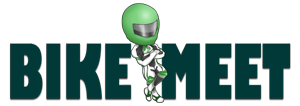Apologies for the long wait for an update. I will not start by giving you new parent/baby excuses: You have come here to read about custom motorcycles. Needless to say, my time in the garage has been somewhat limited over the last 8 months! Now I am just pleased to be able to get a bit of time back in the garage.
Machining bespoke aluminium parts
The spacers for the front wheel are now complete, I machined them out of aluminium on my Myford Super 7 lathe. It’s a great little lathe that I bought several years ago when they were much cheaper than they are now. It’s ideal for this sort of work. Before I could start though, I needed to work out the design of each spacer: One for the left side and one for the right. Essentially, a spacer is just that; a small length of tube that positions your wheel in the centre of the forks, but mine are not so simple: Because the axle I have is actually a little long for the width of the forks, I need to step the spacers to move the axle over by about 11mm. It’s never straight forward is it!

Twisted and Turned Like a Twisty Turny Thing!
The method I used to work out what dimensions I needed is not complicated, but there is a trick to it. I put the front wheel on the axle in the forks. Then measured from the inside of the fork leg to the outside edge of the rim on each side. If the measurements are not equal, then a quick bit of maths. You add them up and divide by two. This tells me what they should be and I move the wheel to suit.
Why measure to the edge of the rim?
The reason I measure to the edge of the rim, and not either side of the hub is that you cannot assume that your rim (and therefore tyre) runs symmetrically on the hub. It may do so, in which case crack on, but I hope you can see here that the point is to centre the part of the wheel that you are riding on. Capeesh? This is especially true with spoked wheels, as the spokes can be tightened up to move the rim all over the place. When I am happy that the wheel is where it needs to be, I measure the gaps that the spacers need to fill. As if to prove my point the length is different for each side.
Designing custom hub spacers
With my dimensions finalised I chop off a piece of 2” aluminium bar and get started on the lathe. The simplest design would have been a section of straight tube, but because I like making things difficult I opt for a tapered finish. This will hide the bearings in the wheel hub. Another boring titbit: It is important that my spacer does not actually touch anything other than the inside race of the bearings. This is because when the bike is in motion, the outer bearing race and the hub will be spinning around the stationary axle and inner race. So to prevent any rub I add a very slight step onto the back of my spacers. I also make an additional washer to space out the nut correctly. Again this is due to the axle not being the correct length.

I was pleased with the completed spacer. Oddly reminiscent of the ‘flying saucer’ in the classic TV series UFO
Getting to a rolling chassis
Slow progress, but progress is progress! It only took me about 6 months to complete the above around new daddy duties. Happily the result was well worth the wait. I now have what is known in the business as a ‘rolling chassis’. Time to stick on some handlebars (not the final ones to be used) and roll it outside for my first proper look. Like I have said before, I think it is always a good idea to get your project outside and step back to see it from a distance. This how it will be seen in the wild.

Looks even better once in place
I am really pleased with the tough look of the bike with its wide front end and chunky front wheel. My suspicions were right however: The front forks needs dropping down around 2” to get the frame sitting level.


It’s getting there!
I will come back to this at a later stage though. I also want to take the weight of all the rest of the components into account. For now, I will satisfy myself with sitting on it and making brum brum noises!
Words and Pictures: Tom Shaw
Read the other parts in this excellent series:
- Building a bespoke Harley custom – Part 1
- Building a bespoke Harley custom – Part 2
- Building a bespoke Harley custom – Part 3
- Building a bespoke Harley custom – Part 4
- Building a bespoke Harley custom – Part 5
- Building a bespoke Harley custom – Part 6
- Building a bespoke Harley custom – Part 7

